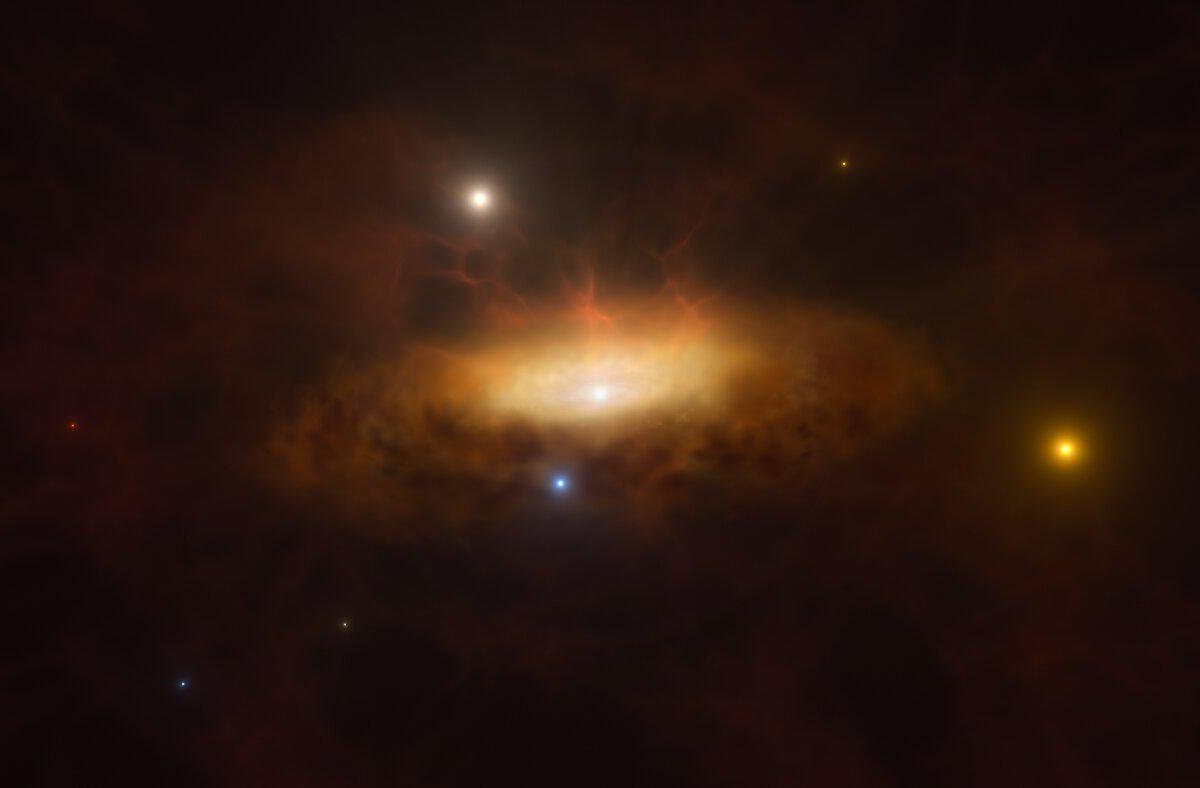It is a rare phenomenon and still little studied by scientists. The real ‘black hole awakening’ may have occurred by the end of 2019It is observed in real time by astronomers at the European Southern Observatory (ESO). The previously inactive galaxy SDSS1335+0728 has become active, the intergovernmental research organization announced in a recent press release.
According to Paula Sánchez Sáez, the main author of the study accepted for publication in the journal Astronomy & Astrophysics, who has been observing the said galaxy for years, “Suddenly, [núcleo] “It began to show dramatic changes in brightness unlike any typical event we’ve seen before.”
This intense increase in brightness at many wavelengths, including X-rays, It is a strong indicator of the formation of an Active Galactic Nucleus (AGN), which occurs when a supermassive black hole “wakes up”.. When this occurs, the cosmic monster begins to swallow enormous amounts of gas and dust, releasing large amounts of energy in the form of radiation.
How do scientists know this is a supermassive black hole?
Although observed in real time by ESO astronomers, Changes in galaxy SDSS1335+0728 were not immediately identified as black holes. Some cosmic events, such as supernova explosions or tidal disturbances (the disappearance of a star approaching a black hole) in the routine of observatories, also cause sudden brightness in galaxies.
However, while these brightness variations persist over several weeks or months, SDSS1335+0728 is even brighter today, more than four years after its first observation. The differences detected in the galaxy 300 million light years away from Earth also show that it is a unique phenomenon different from what we have seen so far.
To be sure, astronomers shared archival data and new observations taken at several international collaborating facilities, including the X-shooter, a medium-resolution broadband spectrophotometer mounted on the Very Large Telescope (VLT) in the Atacama Desert in Chile.
How does a black hole wake up?
Black holes are considered large They have masses greater than a hundred thousand times that of our Sun.. They are found at the centers of most galaxies, such as Sagittarius A (Sgr A)* at the center of the Milky Way. According to co-author Claudio Ricci of Diego Portales University in Chile, “these giant beasts are usually sleeping and cannot be seen directly.”
The activity of a black hole often depends on the availability of matter (“food”) in the vicinity. A cosmic sink that had been dormant for eons, like the one in galaxy SDSS1335+0728, “suddenly started feasting on the gas around it and became very bright,” Ricci explains.
According to the study, further follow-up observations will be carried out to rule out alternative explanations and confirm the uniqueness of the phenomenon.
Stay up to date with the latest astronomical discoveries at TecMundo. Also understand why some physicists believe we are trapped inside a black hole.
Source: Tec Mundo
I’m Blaine Morgan, an experienced journalist and writer with over 8 years of experience in the tech industry. My expertise lies in writing about technology news and trends, covering everything from cutting-edge gadgets to emerging software developments. I’ve written for several leading publications including Gadget Onus where I am an author.













